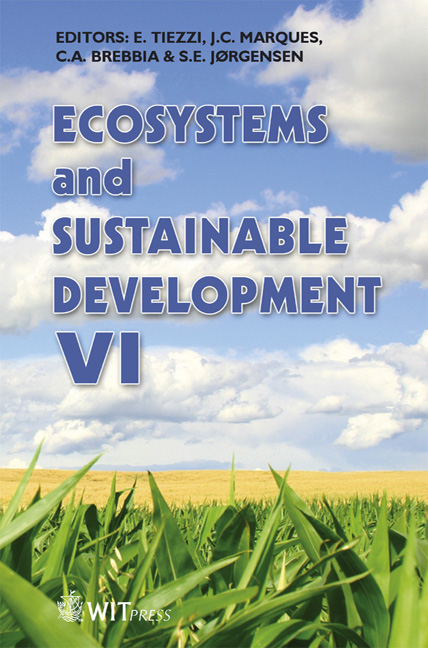Stability And Resilience In Macrobenthic Communities: The Role Of Habitat Disturbance
Price
Free (open access)
Transaction
Volume
106
Pages
9
Published
2007
Size
756 kb
Paper DOI
10.2495/ECO070211
Copyright
WIT Press
Author(s)
C. Guerra, F. Cobo, M. González & J. Alonso
Abstract
The diversity of fluvial ecosystems allows the detection of various changes in the natural equilibrium. These changes can be related to variations in the composition of the fluvial forest, to the chemical or physical quality of the water, or to alterations of the habitat template. The aim of this study was to understand the resilience of the ecosystem to the degradation of the habitat, resulting from the construction of a highway in a regional protected area. This resilience was measured in terms of the reestablishment of macrobenthic communities. Located at the Estorãos River (sub-watershed of the Lima River, NW Portugal), a set of three sampling stations upstream and downstream from the construction site were monitored for a period of one year, and the invertebrate communities were characterized as well as their ecological and biological traits, and the changes that occurred were classified. The observations made clearly mark the moment of the beginning of the construction process, and from the trait analysis we could discriminate between different types of pressures, namely an increment on sediment loads, and riverbed deterioration. This impact also affected the trophic relations and the food preferences of the invertebrate communities. From the analysis it is apparent that the fact that the construction was done in late winter contributed to the reestablishment of the invertebrate communities, since construction didn't affect their sensitive reproduction period. This fact permitted full recolonization of the construction site in a period of four months, reestablishing the community at the same diversity levels as the reference sites. All these aspects are in agreement with the components being analysed, but they lack information from the longer time series and more ecological components are needed to classify the resilience capacity of this type of ecosystem. Keywords: habitat disturbance, fluvial ecosystem resilience, environmental impact, macroinvertebrate communities.
Keywords
habitat disturbance, fluvial ecosystem resilience, environmental impact, macroinvertebrate communities.





